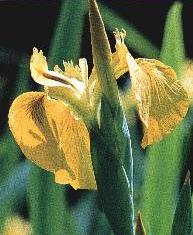
Royal Belgian Institute of Natural Sciences
Section of Conservation Biology
Documents
BRUSSELS
Mammals
Birds
Plants
Habitats
Publications
The Brussels Region is one of the federated entities that constitute Belgium. Its total surface is 161.38 kmē (16138 ha). It is a political unit, limited to 19 boroughs, situated within, but not entirely encompassing, the Brussels urban area. The region lies at the limit between the low, flat Germano-Baltic Plain and the hilly plateaux of Brabant. Formed of Eocene sands, these plateaux fringe the northwestern flank of the Western European Hercynian arc. Altitudes within the Brussels Region range between 20 and 120 metres above sea level. The climate is summer-wet temperate with an average annual temperature of the order of 9° C and an average annual rainfall of 780 mm, fairly evenly spread, with an annual frequency of days with measurable precipitation of 57.3 % and a difference of average rainfall between the wettest month (July) and the driest month (February) of less than 20 mm.
The landscape structure of the Brussels Region is similar to that of other European city-states such as Hamburg, Bremen or Berlin. About 47% of its surface is built-up, 22% is occupied by private gardens and green spaces, 16% by public forests, woods, parks and cemeteries, 10% by agricultural land, fallow land and open-air recreation areas, 3% by green spaces associated with the communication network, within which the 222 ha of railways are particularly important as providers of ecological corridors. Of a previously very rich network of streams, marshes and ponds, the region has retained 113 ha of ponds, a few patches of marshland and rare stretches of fairly altered streams. Efforts to rehabilitate the hydrographic network are in progress. More information on the green spaces and the hydrographic network of the Region is available on the website of the Brussels Institute for Environmental Management.
Conservation-orientated research by the Royal Belgian Institute of Natural Sciences in the Brussels Region has mostly focused on birds, mammals and natural habitats. Bird monitoring efforts have been conducted by the present staff and collaborators of the Conservation Biology Section since the 1950's. Early work on mammals was mostly limited to bats; a more recent effort, undertaken jointly with the Brussels Institute for Environmental Management, has extended to all groups. Recently, assessment work has been conducted in the field of ecological networks, corridors and their connectivity indicators. Documents generated in the course of these activities are being progressively made available online.
